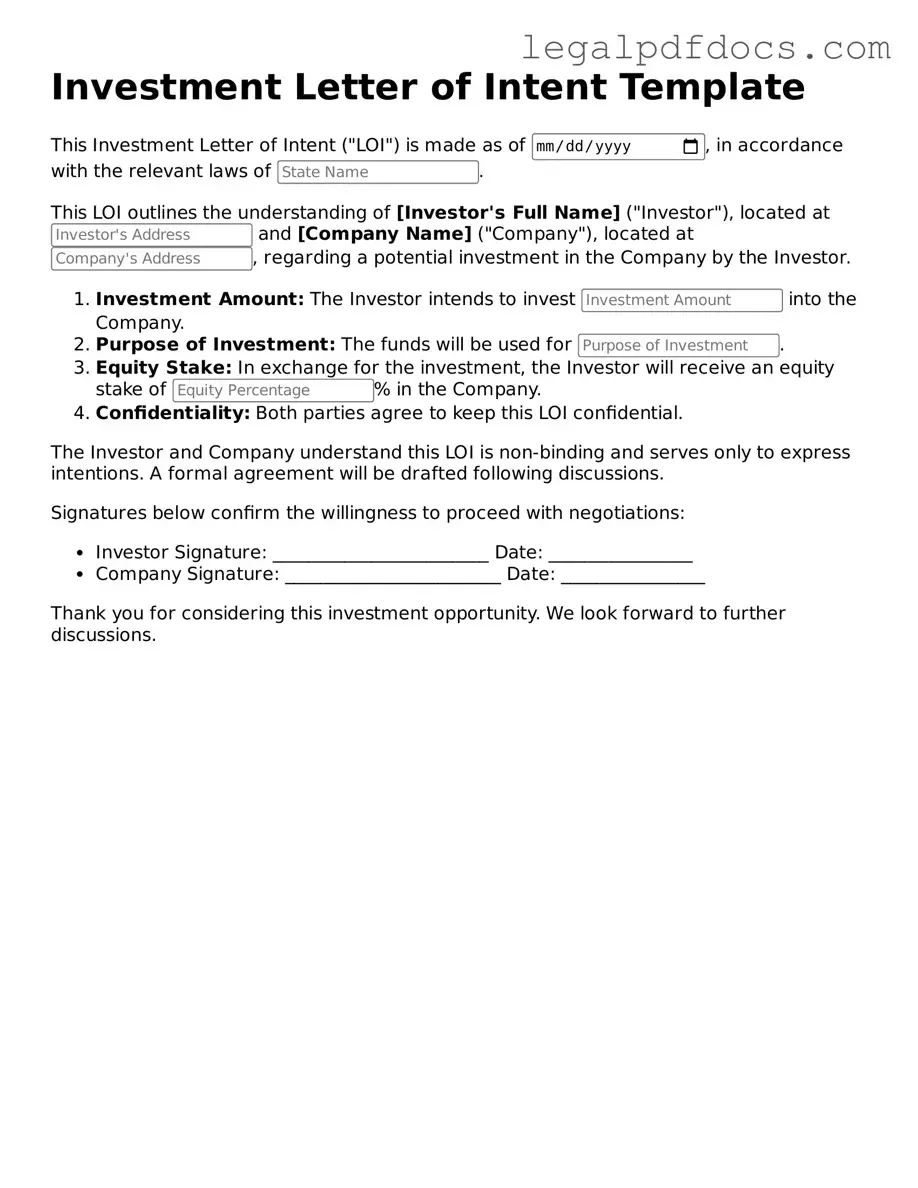Investment Letter of Intent Template
An Investment Letter of Intent is a document that outlines the preliminary terms of a potential investment agreement between parties. It serves as a starting point for negotiations, helping both investors and companies clarify their intentions before formalizing a deal. To take the next step, fill out the form by clicking the button below.
Open Investment Letter of Intent Editor Here
